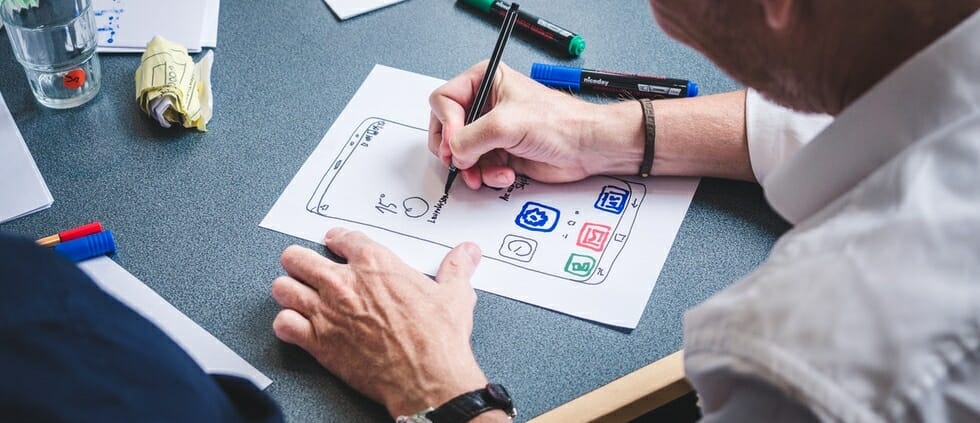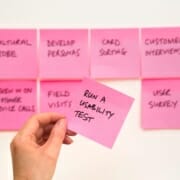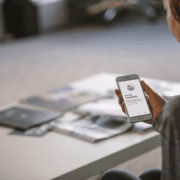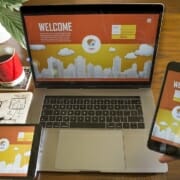Why Emotional Design Is A Game Changer For App Developers
Implementing emotional design for your upcoming project can have a far-reaching impact. It can take your project down a path that will set it apart from competing apps. Instead of following the same trends as others, emotional design allows you to create an app that will leave users with a long-lasting positive perception. Below, we unveil what this concept encompasses and how you should apply it.
1. Focus On The User Experience
As an appreneur, you’re looking at ways to make your app appealing and sticky. And there are several ways to go about this, one of which is focusing on the user experience (UX). But to get this right, you’ll need to grasp what problem you’re trying to solve.
For example, you could be developing a filter app that automatically touches up users’ selfies. And your target audience consists predominantly of young women who want to snap the most amazing photos of themselves. Furthermore, these women don’t care about the technicalities involved in fixing their selfies and are looking for a quick and easy solution. So, your app’s user interface (UI) should be clean and streamlined while being devoid of any complex features.
But, likely, your closest competitors are also treading a similar path. So what should you do to make your app stand out? Well, many developers are capable of delivering apps, which are slick and minimalistic. Yet, it’s all too easy to follow these common design trends set by popular apps in the marketplace. And thus, you’ll end up in a situation where you’re following the herd instead of being a trailblazer.
Sticking to tried and tested design principles may make sense. After all, your users have become accustomed to navigating apps in a certain way. They also have certain expectations in how an app should look and function, which you can’t ignore. However, having a better understanding of design fundamentals can help you take your app to the next level.
2. Enter Emotional Design
App developers not only need to understand their tools and when to use these, but they also need to broaden their horizons. They need to study human behavior and how people interact with everyday items. Objects such as a doorknob, foldable chair, or a hairdryer and how people engage with these offer many valuable clues into human behavior. Moreover, it’s people’s response to using these common everyday items that app developers need to observe closely.
But why is this so important? Primarily because people usually have an emotional response to their experiences. And these may be positive or negative, and people will inevitably associate their experiences with the respective objects and brands. And while app developers don’t make everyday items, this doesn’t mean that people don’t respond similarly to apps. Therefore, it’s crucial to pay close attention to the app user interface to engage and retain your audience.
And if you manage to drive a strong and positive emotional response in users, then you’re onto a winner. Fortunately, the concept of emotional design can aid you in optimizing the interactions users will have with your upcoming app.
3. Understanding The Three Levels Of Emotional Design
Emotional design is a concept detailed in a book written by Donald Norman. Published in 2003, In Emotional Design: Why We Love (or Hate) Everyday Things, delves into how people interact with everyday items. The author reveals how all items have distinct personalities, even if that wasn’t the original intent of the designers of these items. And the same applies to digital creations such as websites and applications.
Furthermore, the author reveals the three cognitive levels that designers will need to engage users. These include visceral, behavioral, and reflective, which can evoke positive responses in users if implemented correctly. And while it’s possible to use these three cognitive levels individually, they’re more powerful when used together.
4. Visceral Design
Depending on the visceral design of your app, you can jolt a positive user experience almost immediately. But what exactly is visceral design, and why is it so powerful? In a nutshell, visceral design involves all the visual cues in your app and how they affect the user. Visual elements, such as the colors, graphic design, fonts, and images, will profoundly impact your audience, even if they don’t understand why that’s occurring.
However, the savvy designer knows how to use these visual elements correctly and understands how they evoke a positive response. For example, bright colors and appealing graphic design often make users feel happy. On the flip side, a more subdued color palette and utilitarian design evoke a more serious tone.
5. Behavioral Design
Unlike visceral design, behavioral design encompasses the value people derive from actually using the product. It encompasses all product functionality, performance, effectiveness, and expected behaviors from users when they complete certain tasks.
It’s possible to deliver a positive user experience if a user’s actions seem enjoyable and rewarding. That’s why your app must be fluid and responsive and make users feel empowered. And this experience needs to be consistent, even after updating your app, to build and retain trust. Moreover, ensure that users can achieve their desired goals with as few steps as possible.
6. Reflective Design
Lastly, we have reflective design, which focuses on users’ feelings after they use your app. Users consciously evaluate your app and try to ascertain all the pros and cons it offers them. And good reflective design will make users think about the app hours after they’ve stopped using it.
But how does one implement good reflective design? By utilizing gamification features that allow users to unlock achievements and attain badges. And while that’s a good starting point, you can further boost engagement and retain users by implementing social features. So make it possible for users to invite friends and share their achievements and experiences with others.
7. Methods To Boost Positive Emotional Responses
Never lose sight that your audience consists of human beings with real feelings. And no matter how well your app solves a problem, you still want to evoke positive emotional responses in your users. Not only will this make your app more appealing, but more memorable too.
If appropriate, don’t shy away from using humorous elements in your app to make it more enjoyable. Add an Easter egg, which will surprise users since it’s something they didn’t expect. And if you have a knack for writing, add a few interesting story elements that will take your users on a journey. You can further enhance these elements with the inclusion of animations, illustrations, and special effects.
The user interface is yet another area that offers the savvy designer many opportunities to excite users. So add subtle or not-so-subtle cues in your app’s interface, which help improve its usability. And ensure that the design language that you’re using speaks to your target audience. Don’t use a bright and bold style if you’re targeting business users.
In Conclusion
Understanding how emotional design impacts users and how they perceive your app in the long term will only benefit your development efforts. And knowing when and how to implement the three cognitive levels will transform your app into an enjoyable and memorable experience. Contact us today to learn how NS804 can help you create phenomenal apps.













Leave a Reply
Want to join the discussion?Feel free to contribute!